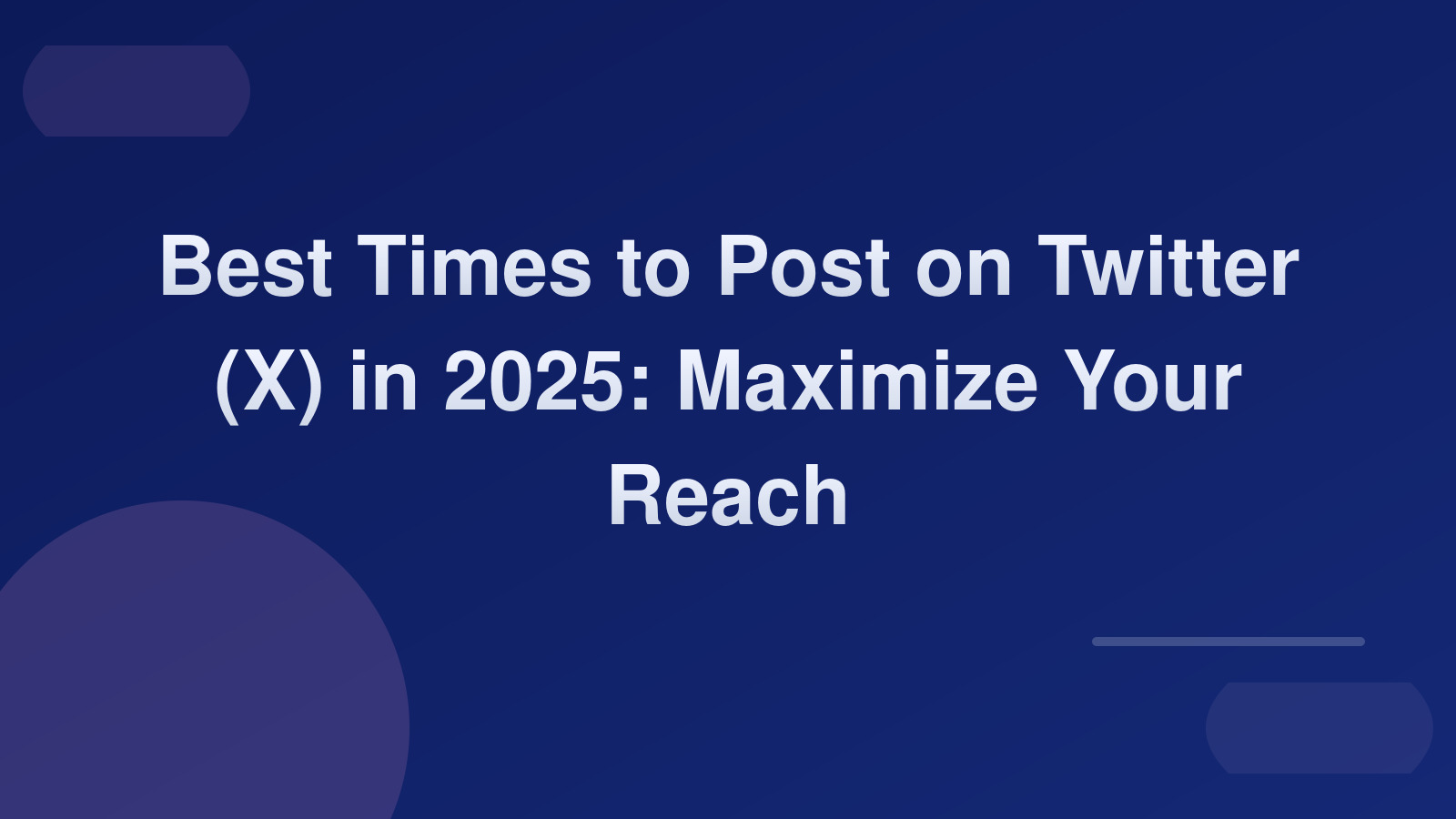
The best times to post on Twitter (now referred to as X) in 2025 remain a crucial factor for social media managers aiming to maximize reach and engagement. Posting when your target audience is active ensures higher visibility, more interactions, and ultimately better campaign results. This article explores the optimal posting times on X, considering the recent shifts in user behavior and platform algorithms.
Twitter (X) is a fast-moving platform where timing can greatly influence your content’s performance. Unlike some other platforms, tweets have a short lifespan, often lasting minutes to a couple of hours in users’ feeds. Therefore, knowing when your audience is most active is vital to delivering content effectively.
With these benefits in mind, let’s explore the data-driven best times to post on X.
Social media trends show that user activity varies across weekdays and weekend days. Understanding these variations helps in scheduling tweets strategically.
| Day | Best Times (Local Time) | Notes |
|---|---|---|
| Monday | 8 AM – 10 AM, 6 PM – 9 PM | High engagement at start/end |
| Tuesday | 9 AM – 11 AM, 5 PM – 8 PM | Consistent mid-morning spike |
| Wednesday | 7 AM – 9 AM, 6 PM – 9 PM | Early morning interactions |
| Thursday | 8 AM – 10 AM, 5 PM – 7 PM | Peak around lunch and evening |
| Friday | 9 AM – 11 AM, 4 PM – 6 PM | Wind-down week activity |
| Saturday | 11 AM – 1 PM | Moderate weekend traffic |
| Sunday | 10 AM – 12 PM | Lower but steady engagement |
These times reflect broad audience habits, but adjustments might be necessary based on your target demographic.
If your audience spans multiple time zones, consider segmenting your posting schedule or posting multiple times to reach users effectively across regions. For example, targeting both US Eastern and Pacific times requires planning tweets across a wider time window.
This first step introduces the importance of posting times specifically tailored for Twitter (X) in 2025. The next step will dive deeper into how to analyze your own audience’s activity and refine posting strategies accordingly.
Understanding general recommended posting times provides a good starting point, but optimizing for your specific audience is the key to success on Twitter (X) in 2025. Using analytics and insights, social media managers can refine schedules by learning when their followers are online and engaging.
Regularly testing different posting times and monitoring engagement metrics help you discover the sweet spot for your brand. Consider A/B testing tweet times over weeks to understand which slots yield higher impressions and interaction.
Different content types may perform better at certain times on X. Combining the right time with appropriate content boosts your reach.
Adapting content formats with posting times sharpens your strategy and helps diversify engagement across your audience.
The next step will provide practical tips for scheduling and automation on Twitter (X), including insights from Plexorin’s multi-platform scheduling capabilities.
To consistently post at the best times on X, leveraging scheduling and automation tools is essential. These tools save time and help maintain an optimized posting rhythm aligned with your audience’s behavior.
Plexorin supports multi-platform scheduling including X, allowing you to:
Automation saves effort but requires monitoring. Analyze performance regularly and adjust your schedules to improve engagement metrics.
While perfect timing is important, ultimate success on X depends on engaging content and interaction:
Mastering the best times to post on Twitter (X) in 2025 is a mix of understanding broad trends, analyzing your audience, and using technology effectively. By implementing strategic scheduling, diverse content timing, and engaging actively, social media managers can maximize their reach and grow engagement substantially.
Ready to streamline your X posting strategy with reliable scheduling and automation? Explore Plexorin’s content scheduler tool to plan, automate, and optimize your Twitter (X) presence effortlessly.

Information provided by AI may contain errors and cannot be considered binding. For accurate information, please contact our representative.